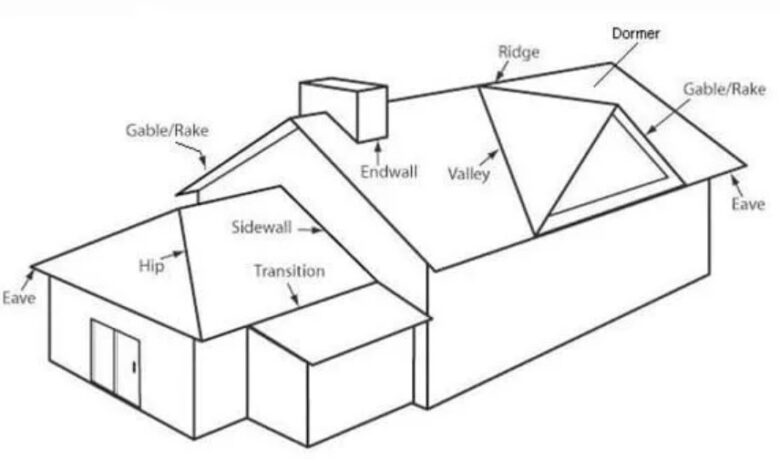Understanding the Roof Installation Process

Installing a new roof is a significant project that can greatly enhance your home’s protection, value, and appearance. Understanding the roof installation process is essential for homeowners who want to ensure that their roofing project is completed correctly and efficiently. From initial planning to the final inspection, each step plays a crucial role in achieving a durable and high-quality roof. We will explore the roof installation process’s key stages, providing valuable insights into what to expect and how to prepare for this important home improvement project.
Steps in roof installation
1. Initial Planning and Preparation
The roof installation process begins with thorough planning and preparation. This stage involves selecting the appropriate roofing materials, determining the scope of work, and obtaining any necessary permits. Homeowners should start by researching different roofing materials, such as asphalt shingles, metal, tile, or wood, to determine which option best suits their needs, budget, and aesthetic preferences. Consulting with a roofing contractor can help you make an informed decision about your new roof’s materials and overall design. Additionally, you must check local building codes and regulations to ensure that your project complies with all requirements and that permits are obtained before work begins.
2. Roof Inspection and Assessment
Before the installation can commence, a thorough inspection and assessment of the existing roof are necessary. The roofing contractor will inspect the current roof to identify any damage, structural issues, or underlying problems that must be addressed before the new roof can be installed. This assessment includes checking for leaks, rot, mold, and the condition of the roof decking. If any issues are found, they will need to be repaired or replaced to ensure a solid foundation for the new roof. The inspection and assessment stage is crucial for identifying potential problems and ensuring the new roof is installed on a sound and stable structure.
3. Removal of the Old Roof
Once the inspection and assessment are complete, the next step is to remove the old roof. This process involves stripping the existing shingles, underlayment, and other roofing materials down to the roof decking. Removing the old roof allows the contractor to inspect the decking for any hidden damage or rot that may not have been visible during the initial assessment. If any damaged sections of the decking are found, they will need to be repaired or replaced to provide a solid base for the new roof. The removal process is typically messy and noisy, so homeowners should be prepared for some disruption during this stage.
4. Installing the Roof Decking
With the old roof removed and any necessary repairs made, the next step is installing the new decking if required. The roof decking, also known as the sheathing, provides the structural support for the roofing materials and serves as the foundation for the entire roof system. In most cases, plywood or oriented strand board (OSB) is used for the roof decking. The contractor will install the decking by nailing the sheets to the roof rafters, ensuring they are securely fastened and properly aligned. This stage is critical for creating a stable and level surface for the subsequent roof layers.
5. Installing the Underlayment
After the roof decking is in place, the next step is to install the underlayment. The underlayment is a protective barrier installed directly on top of the roof decking to provide additional protection against water infiltration. It helps to prevent moisture from penetrating the roof decking and causing damage to the structure. Common types of underlayment include asphalt-saturated felt, synthetic underlayment, and rubberized asphalt. The contractor will roll out the underlayment and secure it with roofing nails or staples, ensuring it is properly overlapped and covers the entire roof surface.
6. Installing the Flashing
Flashing is an essential component of the roof installation process. It provides a waterproof barrier at critical areas where the roof meets other structures, such as chimneys, vents, and skylights. Flashing helps direct water away from these vulnerable areas and prevent leaks. The contractor will install metal or rubber flashing around these penetrations, ensuring they are properly sealed and integrated with the underlayment and roofing materials. Proper flashing installation is crucial for preventing water infiltration and ensuring the long-term durability of the roof.
7. Installing the Roofing Material
With the underlayment and flashing in place, the next step is to install the roofing material. The choice of roofing material will depend on the homeowner’s preferences and the project’s specific requirements. Common roofing materials include asphalt shingles, metal panels, clay or concrete tiles, and wood shakes or shingles. The contractor will start at the bottom edge of the roof and work their way up, overlapping each row of roofing material to ensure proper water drainage. Each piece of roofing material is secured with nails or screws, and care is taken to ensure that the installation is straight and uniform. This stage is the most visible part of the roof installation process and significantly impacts the overall appearance and performance of the new roof.
8. Installing the Ridge Vent
Proper ventilation is essential for maintaining the health and longevity of your roof. A ridge vent is crucial to ensure adequate ventilation for the attic space. A ridge vent is installed along the roof’s peak, allowing warm, moist air to escape from the attic and promoting proper airflow. The contractor will cut a narrow opening along the ridge of the roof and install the ridge vent over the opening, securing it with nails or screws. The vent is then covered with the same roofing material used for the rest of the roof, ensuring a seamless and aesthetically pleasing appearance. Properly installing the ridge vent helps prevent moisture buildup and reduces the risk of mold and rot in the attic.
rEAD ALSO: How to Maintain Your Skylights: Insights from Installation Contractors
9. Installing the Gutters and Downspouts
Gutters and downspouts are essential components of the roof drainage system, helping direct water away from the home’s foundation. After the roofing material is installed, the contractor will install gutters along the edges of the roof, securing them with hangers or brackets. Downspouts are then attached to the gutters and directed away from the foundation to prevent water damage. Proper installation of gutters and downspouts is crucial for protecting the home from water infiltration and maintaining the integrity of the foundation.
10. Final Inspection and Cleanup
Once the roof installation is complete, a final inspection is conducted to ensure all components have been installed correctly and the roof meets the required standards. The contractor will inspect the roof for any defects, loose materials, or areas requiring additional attention. Any issues identified during the inspection will be addressed and corrected before the project is completed. After the inspection, the contractor will clean up the work area, removing any debris, nails, and other materials to ensure the property is clean and tidy. The final inspection and cleanup stage is essential for ensuring that the roof installation has been completed to the highest standards and that the homeowner is satisfied with the results.
11. Conducting a Final Walkthrough
After the final inspection and cleanup, the contractor will conduct a final walkthrough with the homeowner to review the completed work and address any questions or concerns. During the walkthrough, the contractor will explain the key features of the new roof, including the materials used, ventilation systems, and drainage components. This is also an opportunity for the homeowner to identify any areas requiring further attention or adjustments. The final walkthrough ensures the homeowner is fully informed about the new roof and is satisfied with the completed project.
12. Providing Warranty Information
A reputable roofing contractor will provide warranty information for the new roof’s materials and workmanship. Material warranties are typically provided by the manufacturer and cover defects in the roofing materials, while the contractor provides workmanship warranties and covers installation errors. The contractor will provide the homeowner with detailed warranty documentation, including the terms and duration of the warranties, and explain the process for making a warranty claim if needed. Providing warranty information is an important step in ensuring that the homeowner is protected and has peace of mind in the event of any future issues with the roof.
13. Educating the Homeowner on Maintenance
Proper maintenance is essential for prolonging the new roof’s life and ensuring its continued performance. The contractor will educate the homeowner on the necessary maintenance tasks, such as regular inspections, cleaning gutters, and removing debris from the roof surface. They will also guide in identifying potential issues, such as loose or damaged shingles, and recommend a schedule for routine maintenance and inspections. Educating the homeowner on maintenance helps to ensure that the new roof remains in good condition and provides long-term protection for the home.
Conclusion
Understanding the roof installation process is essential for homeowners who want to ensure that their roofing project is completed correctly and efficiently. Each stage is crucial in achieving a durable and high-quality roof, from initial planning and preparation to the final inspection and cleanup. By familiarizing yourself with the key steps of the roof installation process, you can make informed decisions and actively participate in ensuring the success of your roofing project. With proper planning, attention to detail, and collaboration with a skilled contractor, you can achieve a roof that enhances your home’s protection, value, and appearance for years to come.




